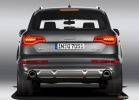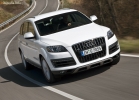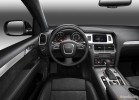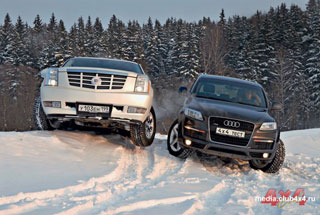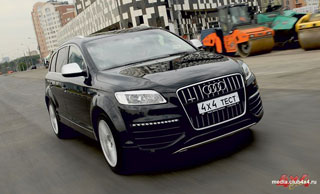Audi Q7 test drive since 2009 SUV
When SUVs become environmentally friendly
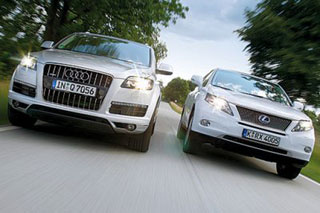 The second generation of the Japanese Lexus RX 450H with a hybrid drive opposes Q7 3.0 TDI Clean Diesel. Audi is the first SUV'om produced in Germany that meets Euro-6 standards.
The second generation of the Japanese Lexus RX 450H with a hybrid drive opposes Q7 3.0 TDI Clean Diesel. Audi is the first SUV'om produced in Germany that meets Euro-6 standards. Most of the exhaust of the diesel engine is nitrogen oxides, which cause irritation of the respiratory tract and other unpleasant consequences. However, the current rates of the toxicity of the exhaust gases provide for diesel units the level of emission of nitrogen oxides, more than three times higher than the permissible level of release of this substance with gasoline engines. The question arises: how to reduce the number of nitrogen oxides produced by a diesel engine? The answer is simple: you need to lower its performance. Then the engine will less pollute the atmosphere of nitrogen oxides, but will spend as much fuel as its gasoline colleague. Experts found a solution: the diesel engine should still remain economical, and the nitrogen oxides that appear as a result of its operation as part of exhaust gases can be reduced using a catalyst that turns nitrogen oxides into nitrogen. True, this will require some help in the form of an additional substance of the urea, known as Adblue.
It is placed in a separate tank, which in the winter needs to be heated. From this tank, urea is injected into the catalyst. Audi calls such Clean Diesel units, and Q7 3.0 TDI is one of the first representatives of this species. However, he does not prove the theory of economy in the Clean Diesel variant with the complex subsequent processing of exhaust gases, the car began to consume 0.6 liters more than before. But weaker or heavier than 3.0 TDI did not become: unchanged 240 horsepower is 2.4 tons of their own mass. This allows the giant Q7 to quickly gain speed after stopping. And by the way, there is no reason to wrinkle the nose when mentioning the addition of urea. The smell of the car participating in the test was no different about the smell of ordinary diesel machines. Much less unpleasant odors exudes a gasoline hybrid Lexus. Its concept is simple: a gasoline engine is taken as a basis, which, by definition, is less emitting exhaust gases, after which work is carried out to increase its economy where it is especially gluttonous: in the urban movement.
The gasoline engine is silent when the car at a speed of 100 km/h drives up to the settlement. The low pressure on the gas pedal does not activate the disc brakes, but the electric motors, which now do not accumulate the charge, but consume it. And this charge is stored in a huge 288-volt battery under the rear seats.
Here the Japanese rely on the electric motors: two such engines in front (123 and 116 kW) and additional on the rear wheels (50 kW) with a total torque of 562 nm pushing the car already where the Audi diesel is still desperately waiting for the turbine. And this is not all: the Lexus gasoline engine has at its disposal 248 horsepower, although they rush much noisier. In general, this creates the effect of rubber tape. One of the reasons for this result is the absence of a gearbox as such. After all, three units located in front (gasoline engine, electric motor and generator) are connected through planetary transmission. And thanks to the engine speed and the direction of the Lexus electric motor, it can imitate a vast transmission. This is exactly what happens with complete acceleration, when the gasoline engine maintains a constant number of revolutions, and Lexus gains speed. But still on the Autoban, the hybrid RX will not become a sensation. Partly because at a speed of 160 km/h, the fuel consumption rises catastrophically, but in diesel Audi, on the contrary, the appetite is moderate. But as soon as you find yourself on the highway with speed restrictions, the hybrid Lexus demonstrates its strong side.
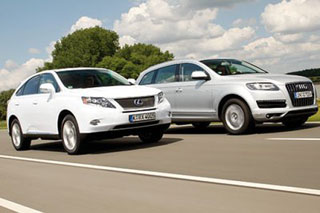 The gasoline engine is silent when the car at a speed of 100 km/h drives up to the settlement. Disk brakes are not activated until the driver clicks on the pedal at least with an average degree of pressure. But electric motors react immediately now they do not accumulate, but consume electricity.
The gasoline engine is silent when the car at a speed of 100 km/h drives up to the settlement. Disk brakes are not activated until the driver clicks on the pedal at least with an average degree of pressure. But electric motors react immediately now they do not accumulate, but consume electricity. Only from time to time the car requires the help of a gasoline engine, which, if necessary, is smoothly connected. It sometimes seems that he does not understand anything in this world when the Lexus driver, when the Audi Clean Diesel traffic lights that stopped next to him, as in the old days, does not jerk his motor. Only then Audi ceases to overshadow Lexus when it comes to real operation. And this applies not only to high speed on an autobahn, where the German is more economical than Lexus to one and a half liters per hundred kilometers. For towing heavy trailers, the hybrid Lexus is also less adapted: it can only take 2 tons against 3.5 tons of Audi captured ability. And finally the swamp: here Audi, rather, interferes with its size and the protruding front spoiler. Lexus, which, according to the instructions, cannot be released in off -road at all, simply gives up on a slippery rise. The additional thrust of the rear axle with electronic control is too small, ESP reports the danger of slipping the front wheels and ruthlessly blocks the gas supply. The front wheels, which are given an excess of torque, are torn to battle for several moments, after which Lexus just freezes, he continues to buzz and remains absolutely environmentally friendly.
The game repeats again and again. Lexus travels along the settlements, although with excessive stiffness, but almost silently. Only from time to time the car requires the help of a gasoline engine, which, if necessary, is smoothly connected.
You can hardly be called Lexus classic SUV'om. On off -road, he will be stopped by the first serious obstacle. But this minus smooths out its excellent handling on the road and low fuel consumption. Audi has a completely different character: the car is large, practical, reliable, not gluttonous.
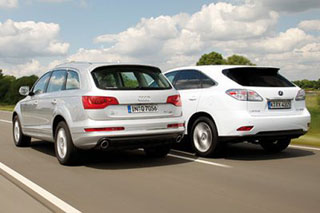
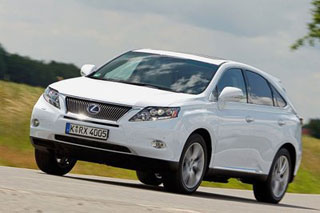
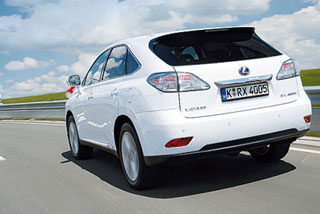
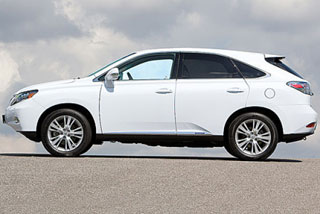
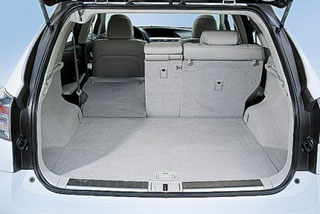
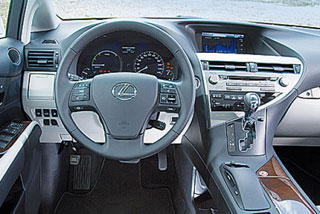
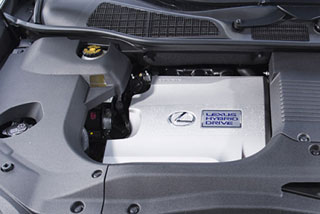
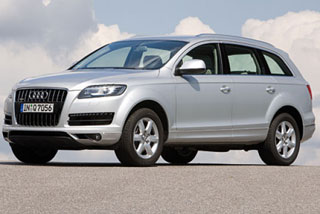
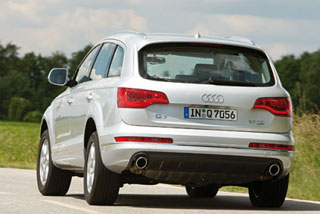
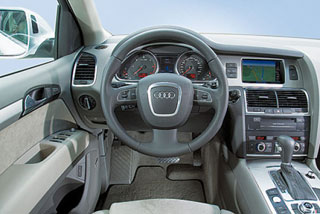
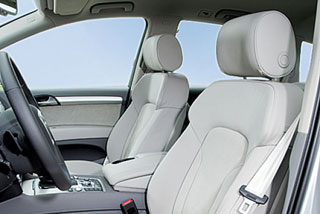
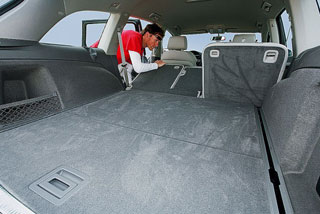
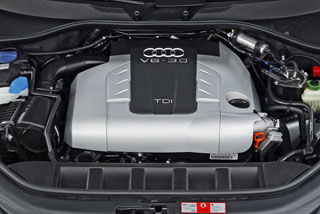
Source: Auto Bild


